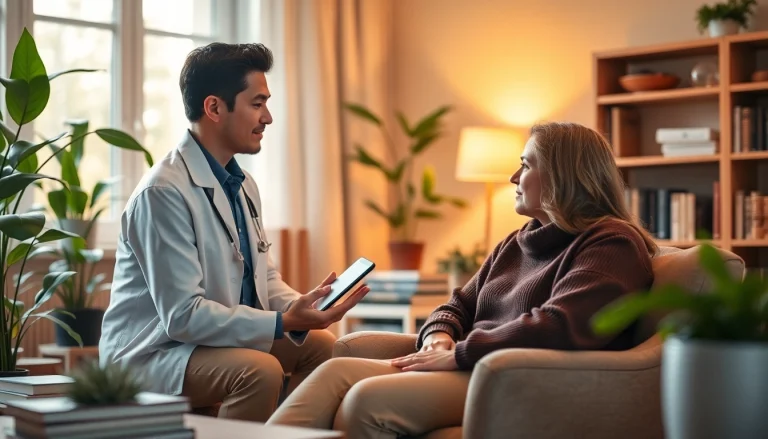
Understanding the Role of Communication in Relationships
Definition of Communication in Relationships
Communication in relationships refers to the process through which individuals exchange information, feelings, and thoughts with one another. It encompasses verbal, non-verbal, and written forms of expression. Effective communication is not merely about transmitting messages; it’s about fostering understanding and connection between individuals. In nurturing relationships, the way we communicate plays a pivotal role in establishing emotional intimacy, trust, and mutual respect. For those seeking to enhance their communication in relationships, it is essential to recognize that quality communication requires both skill and effort.
The Impact of Effective Communication
Effective communication can significantly influence relationship satisfaction. Studies reveal that couples who engage in open, honest conversations are more likely to experience higher levels of happiness and connection. When partners communicate effectively, they can resolve conflicts more efficiently, understand each other’s perspectives, and deepen their emotional connection. Conversely, poor communication can lead to misunderstandings, emotional disconnection, and even relationship breakdowns. The benefits of effective communication include:
- Enhanced emotional intimacy and support
- Stronger problem-solving abilities
- Improved conflict resolution strategies
- Increased relationship satisfaction
Common Barriers to Healthy Communication
Despite the benefits of effective communication, many individuals encounter barriers that hinder their ability to convey messages or understand their partners fully. Common barriers include:
- Assumptions and Misinterpretations: Assuming what the partner feels or thinks can lead to miscommunication.
- Emotional Triggers: Past experiences might result in emotional reactions that impair clear communication.
- Lack of Active Listening: Focusing on what to say next instead of truly listening can create distance.
- Judgment and Criticism: Being harsh or critical can discourage open dialogue.
Key Strategies for Effective Communication in Relationships
Active Listening Techniques
Active listening is a foundational skill to improve communication in relationships. It involves completely focusing on the speaker, understanding their message, responding thoughtfully, and remembering key points for later discussion. Techniques to enhance active listening include:
- Show Genuine Interest: Use body language, such as nodding and leaning slightly forward, to indicate engagement.
- Reflective Feedback: Paraphrase or summarize what the partner has said to ensure clarity and verify understanding.
- Avoid Interrupting: Allow the speaker to finish before responding to show respect for their message.
Asking Open-Ended Questions
Open-ended questions encourage deeper conversations by inviting the partner to elaborate on their feelings and thoughts. Instead of asking questions that can be answered with a simple “yes” or “no,” opt for those that promote discussion. Examples include:
- “How did that situation make you feel?”
- “Can you explain your thoughts on this matter?”
- “What do you think we can do to resolve this issue?”
Understanding Nonverbal Communication
Nonverbal communication encompasses body language, facial expressions, eye contact, and tone of voice. These cues can significantly alter the message being conveyed. Key factors in nonverbal communication include:
- Facial Expressions: A smile can foster warmth, while a frown might indicate disapproval.
- Gestures: Using hand movements can emphasize key points.
- Posture: Open posture can signal receptiveness, while crossed arms might indicate defensiveness.
Building Trust Through Communication in Relationships
The Essence of Honesty and Transparency
Trust serves as the foundation of any healthy relationship, and communication plays an integral role in building trust. Honesty and transparency involve sharing feelings, needs, and experiences openly. Practicing openness requires vulnerability and cultivating a safe space for both partners to express themselves without fear of judgment. Honesty does not simply involve stating facts; it includes being true to feelings and thoughts even when uncomfortable.
Managing Conflicts Constructively
Conflict is a natural aspect of any relationship; however, how conflicts are managed can determine the relationship’s long-term health. Effective communication during conflicts involves several strategies, such as:
- Stay Calm: Take a moment to breathe and collect your thoughts rather than reacting impulsively.
- Avoid Blame: Frame issues in terms of “I” statements (e.g., “I feel frustrated when…”) rather than “you” statements.
- Focus on Solutions: Instead of dwelling on the problem, shift the conversation towards potential solutions.
Establishing Boundaries and Expectations
Clear communication regarding boundaries is essential for maintaining a healthy relationship. Partners should openly discuss their comfort levels around different issues, including personal space, emotional sharing, and mutual respect for time. Setting clear expectations helps prevent misunderstandings and fosters a sense of safety and security.
Improving Communication Skills Together
Practicing Regular Check-Ins
Regular relationship check-ins allow partners to share feelings, reflect on the relationship’s health, and address any concerns proactively. These sessions can be informal and should focus on creating a safe space for open dialogue. Setting aside time each week or month for a check-in can greatly enhance communication and relationship satisfaction.
Participating in Couples Communication Workshops
Couples can benefit significantly from communication workshops that provide tools and techniques for effective interaction. These sessions often involve role-playing scenarios, group discussions, and expert-led advice on how to enhance communication dynamics. Workshops also promote teamwork and understanding of partner perspectives.
Using Technology to Enhance Communication
In today’s digital age, utilizing technology can help facilitate better communication in relationships. Couples can engage in video calls, text each other meaningful messages, or utilize apps designed for relationship goals. However, it is vital to balance technology use with face-to-face communication to maintain emotional intimacy.
Evaluating Communication Styles in Relationships
Identifying Personal Communication Styles
Recognizing one’s own communication style is crucial for effective interactions. Individuals may lean towards styles such as assertive, passive, or aggressive communication. Understanding these styles can help partners identify potential areas of conflict and explore ways to improve dialogues.
Adapting to Your Partner’s Style
Successful communication often requires adapting to each other’s styles. This might involve being more assertive if the partner struggles to express themselves or toning down assertiveness when faced with a more sensitive partner. Flexibility in communication fosters mutual respect and understanding.
Creating a Personalized Communication Plan
Developing a personalized communication plan allows couples to set specific goals for improving their interactions. Elements of the plan may include agreements on how to approach difficult conversations, practices for daily check-ins, or establishing signals for needing space. Having a tailored approach ensures both partners feel heard and valued.




